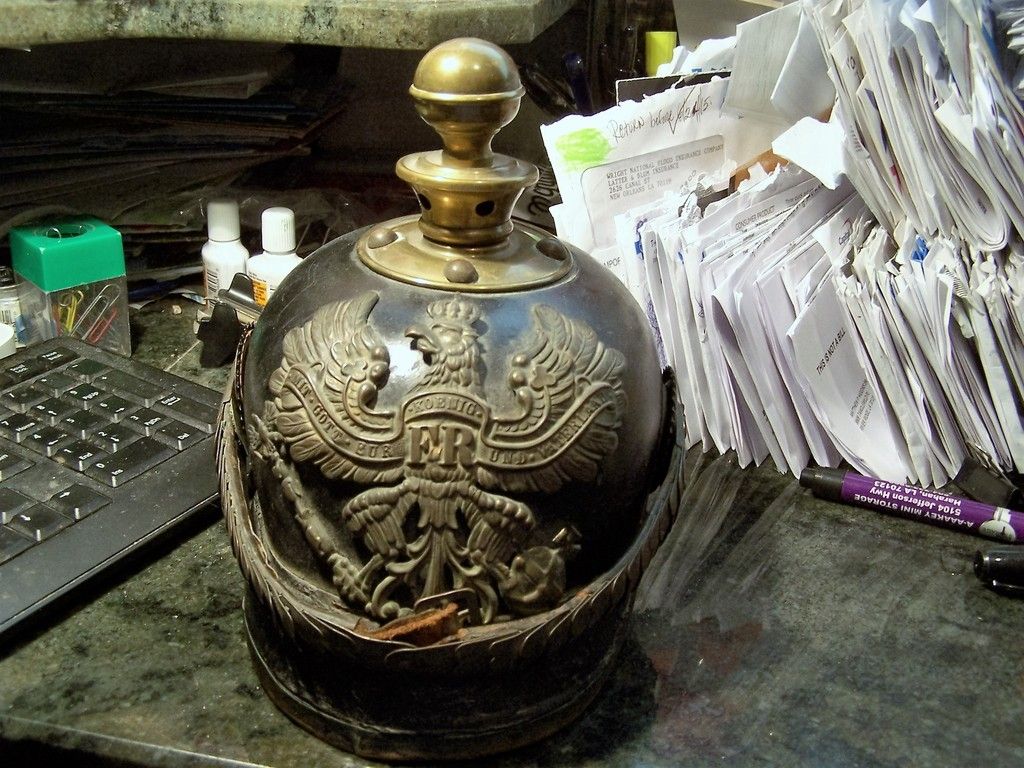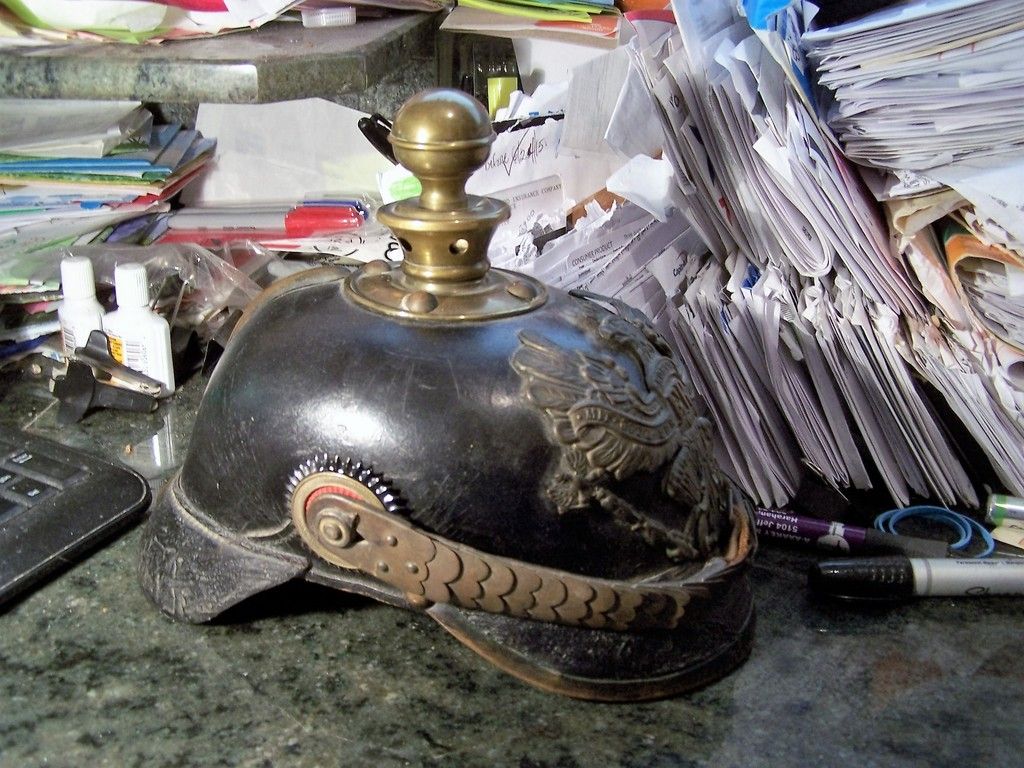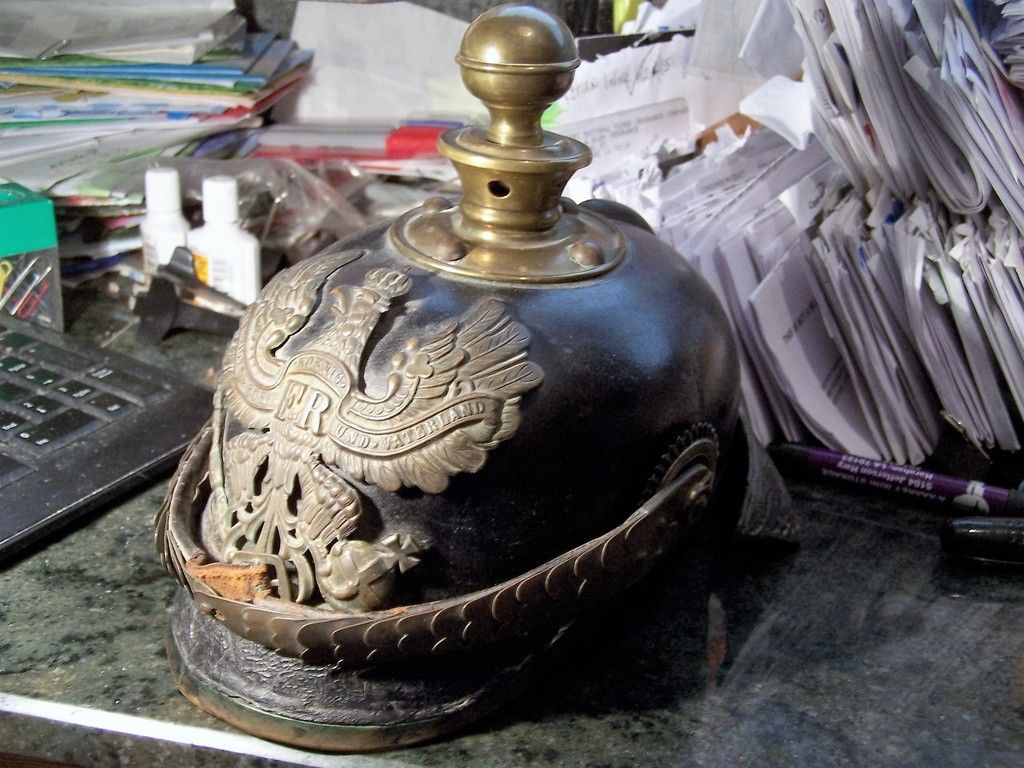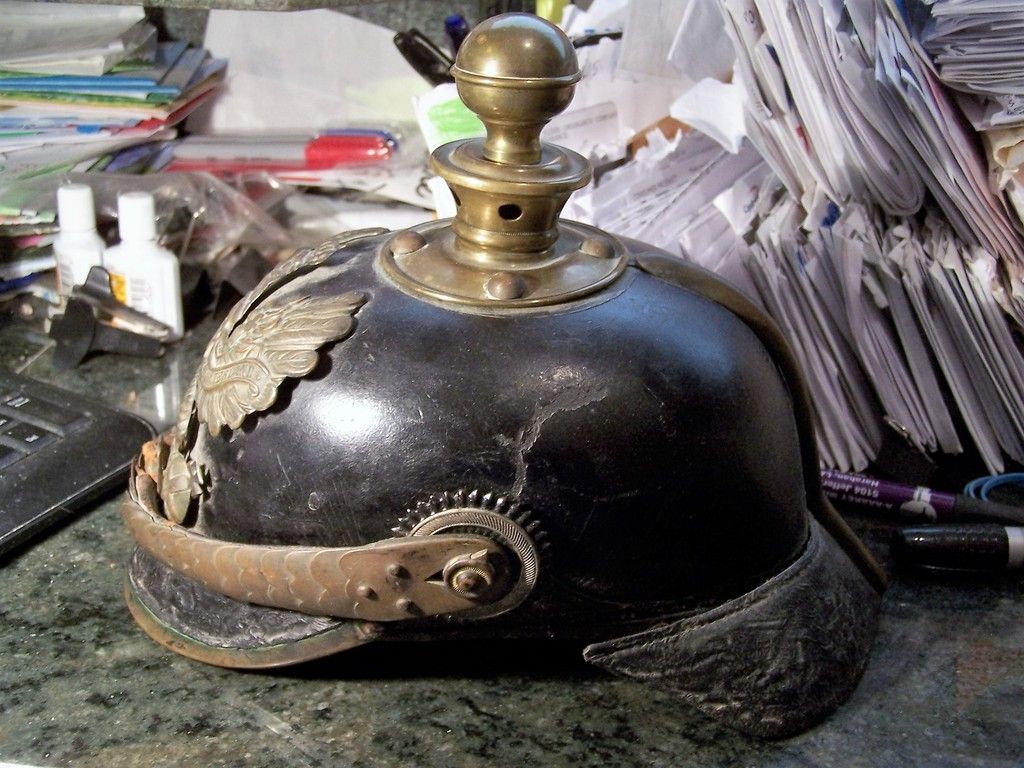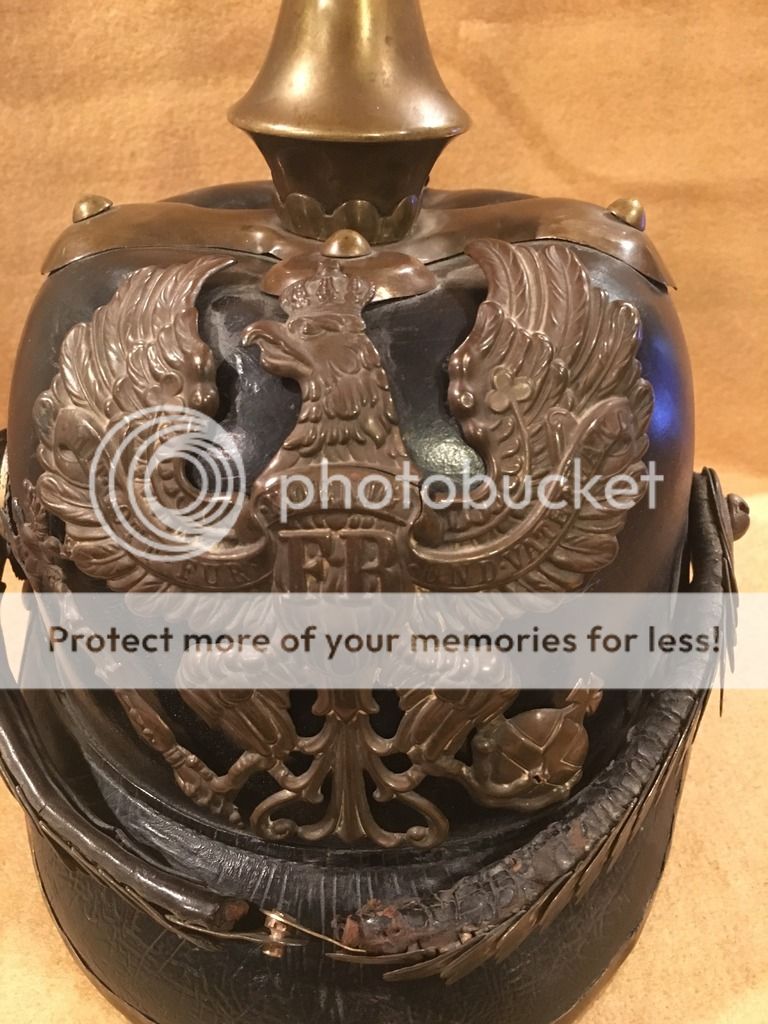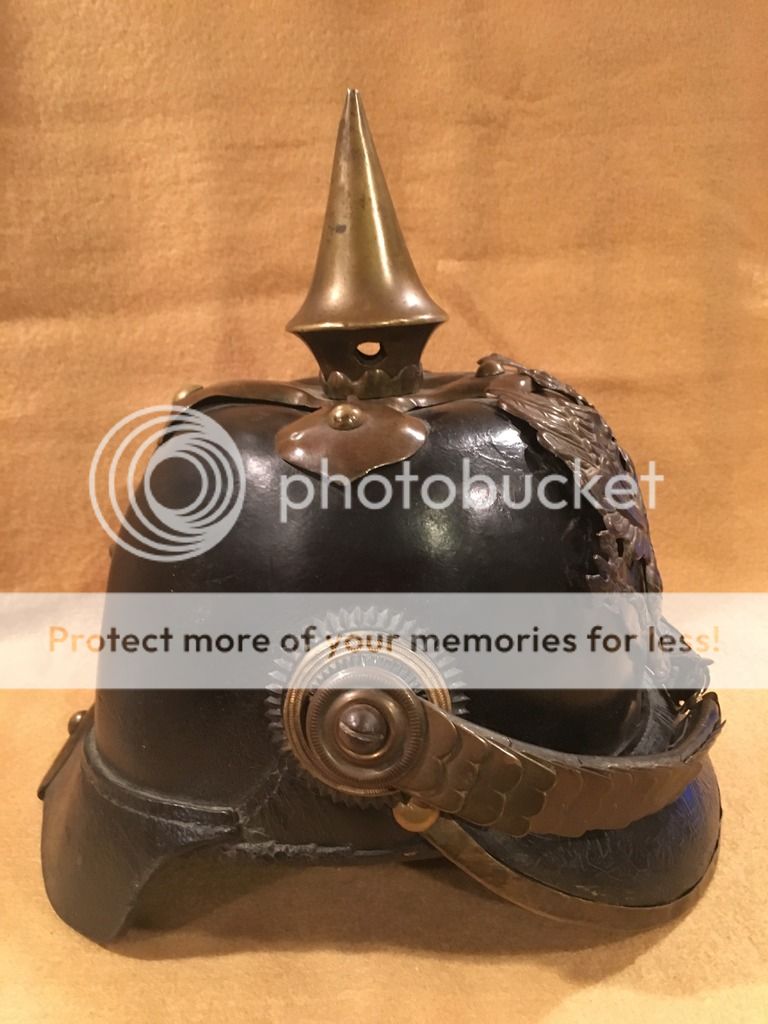I have had a nice old 1860's-70's period line Infantry Pickelhaube in my collection, but lately its caught my eye next to its younger pre-WWI counterparts who stand out with bright brass.
The pickelhaube is in fairly good shape, all things considered with a couple of parts that need to be fixed, but the leather is good, no issues with stitching or an type of rot and the shape is good as I keep all my headgear blocked to maintain shape.
My question to forum members relates to the hardware on this pickelhaube in that it is nearly bronze colored with over 100 years of good patina.
All of the other helmets in my collection, the brass may have had a little patina so a little polish and cleaning was not an issue. In this case I would be going from night to day literally. Having spent years in the Museum world, restorations of artifacts was an art form meant to stabilize the artifact, not to alter it, though there was and is still great debate in the community. In my case, we as an Institution were charged with preserving an aircraft collection.
In some cases, aircraft were restored and they looked like they rolled off the assembly line yesterday. In many cases they required this level of restoration. Today you see more and more being stabilized, repaired and preserved, but not taken down and restored to look brand new.
Thus my question. I am not sure if there is a right or wrong answer as much a personal preference.
I would welcome members thoughts regarding how these older Pickelhaubes look all polished up verses just cleaned and with the hardware maintaining the patina time gave them.
Also one last question though not as pressing, does the polishing of hardware of this type impact value in terms of dollars or desire to have such a piece in ones collection, polished or not?
Thank you. I welcome your thoughts. Joe
The pickelhaube is in fairly good shape, all things considered with a couple of parts that need to be fixed, but the leather is good, no issues with stitching or an type of rot and the shape is good as I keep all my headgear blocked to maintain shape.
My question to forum members relates to the hardware on this pickelhaube in that it is nearly bronze colored with over 100 years of good patina.
All of the other helmets in my collection, the brass may have had a little patina so a little polish and cleaning was not an issue. In this case I would be going from night to day literally. Having spent years in the Museum world, restorations of artifacts was an art form meant to stabilize the artifact, not to alter it, though there was and is still great debate in the community. In my case, we as an Institution were charged with preserving an aircraft collection.
In some cases, aircraft were restored and they looked like they rolled off the assembly line yesterday. In many cases they required this level of restoration. Today you see more and more being stabilized, repaired and preserved, but not taken down and restored to look brand new.
Thus my question. I am not sure if there is a right or wrong answer as much a personal preference.
I would welcome members thoughts regarding how these older Pickelhaubes look all polished up verses just cleaned and with the hardware maintaining the patina time gave them.
Also one last question though not as pressing, does the polishing of hardware of this type impact value in terms of dollars or desire to have such a piece in ones collection, polished or not?
Thank you. I welcome your thoughts. Joe

